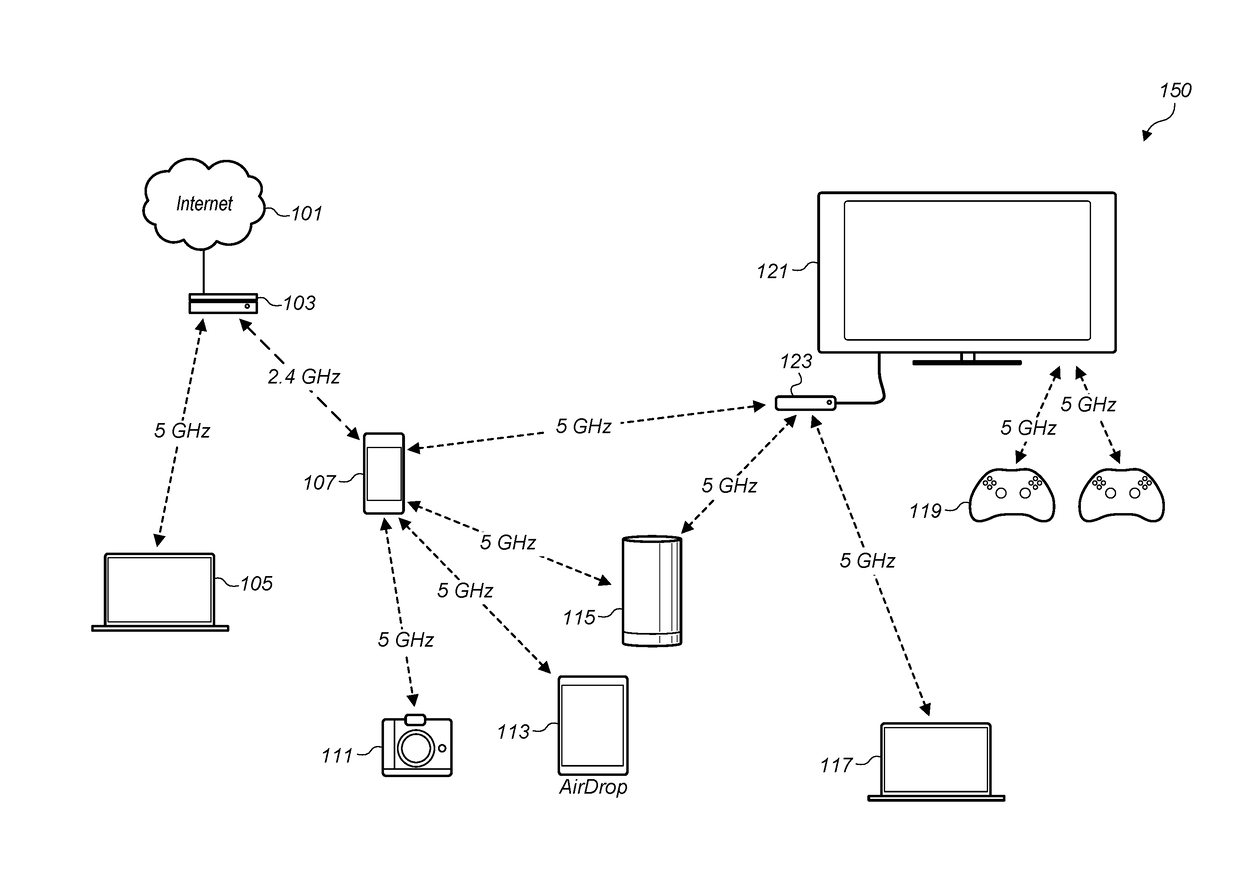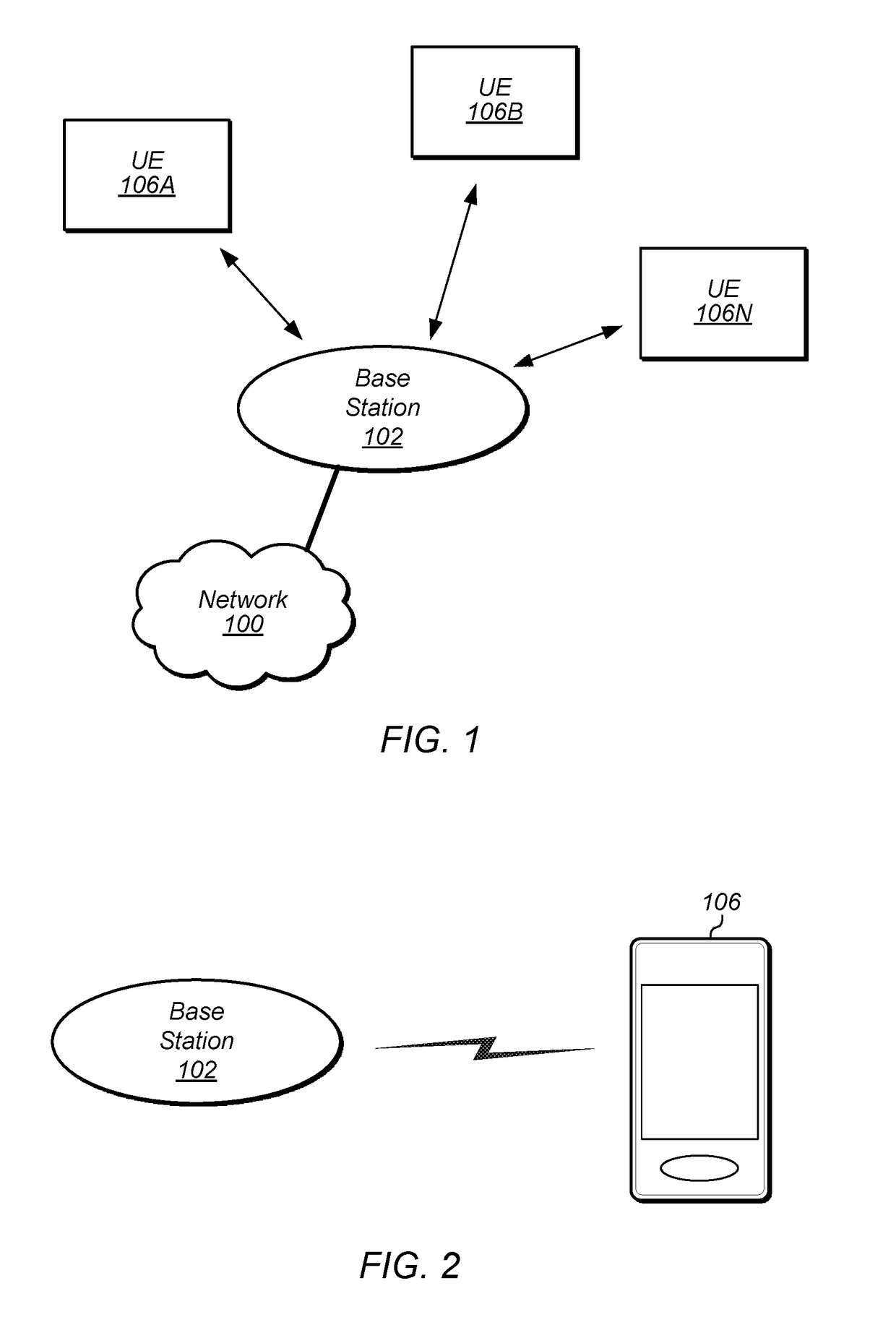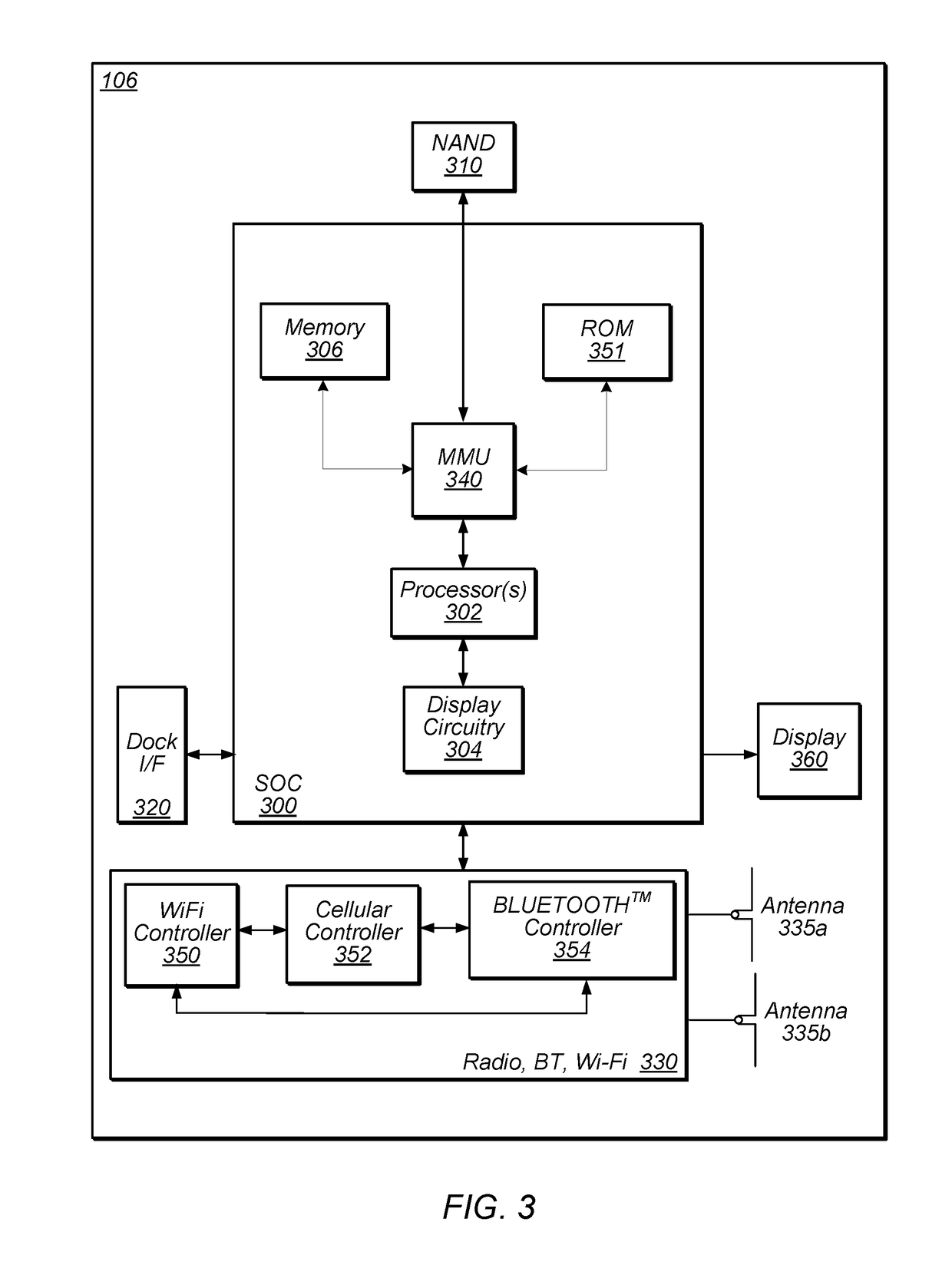LAA/WiFi Coexistence for 5GHz Antenna Sharing
a technology of laa/wifi and antenna sharing, applied in the field of wireless communication, can solve the problems of reducing the performance of streaming applications (data streaming), affecting the service life of cellular communications conducted in the unlicensed band(s), and affecting the service life of cellular communications conducted in the licensed band, etc., to achieve the effect of reducing the rate of active scanning
- Summary
- Abstract
- Description
- Claims
- Application Information
AI Technical Summary
Benefits of technology
Problems solved by technology
Method used
Image
Examples
Embodiment Construction
Acronyms
[0028]Various acronyms are used throughout the present application. Definitions of the most prominently used acronyms that may appear throughout the present application are provided below:[0029]ACK: Acknowledgement[0030]APR: Applications Processor[0031]BS: Base Station[0032]BSR: Buffer Size Report[0033]CC: Component Carrier[0034]CMR: Change Mode Request[0035]CQI: Channel Quality Indicator[0036]DL: Downlink (from BS to UE)[0037]DYN: Dynamic[0038]FDD: Frequency Division Duplexing[0039]FT: Frame Type[0040]GPRS: General Packet Radio Service[0041]GSM: Global System for Mobile Communication[0042]HARQ: Hybrid Automatic Repeat Request[0043]IE: Information Element[0044]LAN: Local Area Network[0045]LBT: Listen Before Talk[0046]LTE: Long Term Evolution[0047]LTE-U: LTE in Unlicensed Spectrum[0048]LAA: License Assisted Access[0049]MAC: Media Access Control (layer)[0050]NACK: Negative Acknowledgement[0051]PCell: Primary Cell[0052]PDCCH: Physical Downlink Control Channel[0053]PDSCH: Physic...
PUM
 Login to View More
Login to View More Abstract
Description
Claims
Application Information
 Login to View More
Login to View More - R&D
- Intellectual Property
- Life Sciences
- Materials
- Tech Scout
- Unparalleled Data Quality
- Higher Quality Content
- 60% Fewer Hallucinations
Browse by: Latest US Patents, China's latest patents, Technical Efficacy Thesaurus, Application Domain, Technology Topic, Popular Technical Reports.
© 2025 PatSnap. All rights reserved.Legal|Privacy policy|Modern Slavery Act Transparency Statement|Sitemap|About US| Contact US: help@patsnap.com



